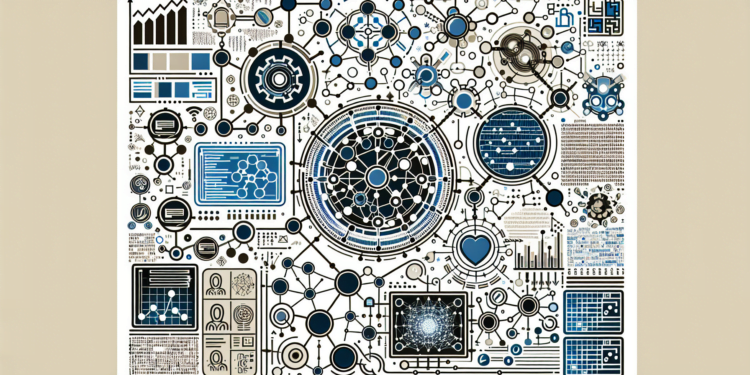Artificial Intelligence (AI) and Machine Learning (ML) have seen remarkable development, enabling the addressing of increasingly complex and diverse problems. This is particularly evident in community detection, an area of study focused on identifying natural groups or sets of entities within complex networks. These entities can range from individuals on social media to nodes in biological networks. This article provides an up-to-date glossary of essential terms in the field of AI applied to community detection.
Community Detection Algorithms
Modularity:
An optimization criterion that quantifies the strength of the division of a network into communities. High modularity indicates an effective structuring of the network into clusters.
Louvain:
A popular method for detecting communities in large networks. It uses a heuristic based on modularity optimization and is known for its speed and simplicity.
Infomap:
This algorithm employs information theory to partition the network, minimizing the description length of random walks throughout it, thus revealing its community structure.
Clique Percolation Method (CPM):
An approach that identifies communities as unions of cliques (subgroups where all nodes are interconnected) that share nodes.
Girvan and Newman Algorithm:
Based on the notion of “betweenness centrality,” this algorithm progressively removes links with the highest centrality to divide the network into natural communities.
Deep Learning in Community Detection
Convolutional Neural Networks (CNN):
These networks, although primarily used in computer vision, have also been adapted to work with structured data like graphs, allowing for the identification of complex patterns in networks.
Graph Neural Networks (GNN):
Specifically focused on graph data, GNNs can learn the structure of a network and the features of its nodes to effectively detect communities.
Variational Graph Autoencoders:
A generative method that learns to represent nodes in a compact latent space, facilitating the identification of communities through similarity in this space.
Evaluation Metrics
NMI (Normalized Mutual Information):
An information theory-based measure that compares two partitions of a network to quantify how much information about one partition is present in the other.
Rand Index:
A measure that calculates the degree of agreement between two partitions, considering all pairs of nodes and counting those that are consistently assigned to the same or different communities.
Adjusted Rand Index (ARI):
Similar to the Rand Index, but adjusted for the possibility of agreement by chance, thus providing a more precise measure.
Challenges and Innovations
Scalability:
The exponential growth in the size of networks presents computational challenges that require new strategies for efficient community analysis.
Dynamic Nature of Communities:
Adapting to networks that change over time (dynamic networks) where communities can evolve, merge, or fracture is critical.
Multi-modality:
The effective combination of different types of data (such as text, images, and connections in social networks) for a richer and more informative community detection.
Practical Applications
Community detection is being applied in multiple contexts, such as in traffic modulation in telecommunications networks, social network analysis for marketing, and computational biology for the identification of functional structures in protein interaction networks.
Case Studies
Facebook:
The analysis of community structure has been useful in understanding how news and memes spread across the network, which is vital for grasping and moderating misinformation and viral content.
Co-authorship Networks:
In academia, studying communities within co-authorship networks can reveal collaborative patterns and research trends across various scientific disciplines.
This glossary outlines the key concepts in the study of community detection through AI, delineating both the methods and the challenges and applications. As AI technologies advance, we can expect that the understanding and ability to manipulate clustering and community phenomena in large networks will continue to deepen, offering increasingly impactful insights and applications in both the digital and physical worlds.






















